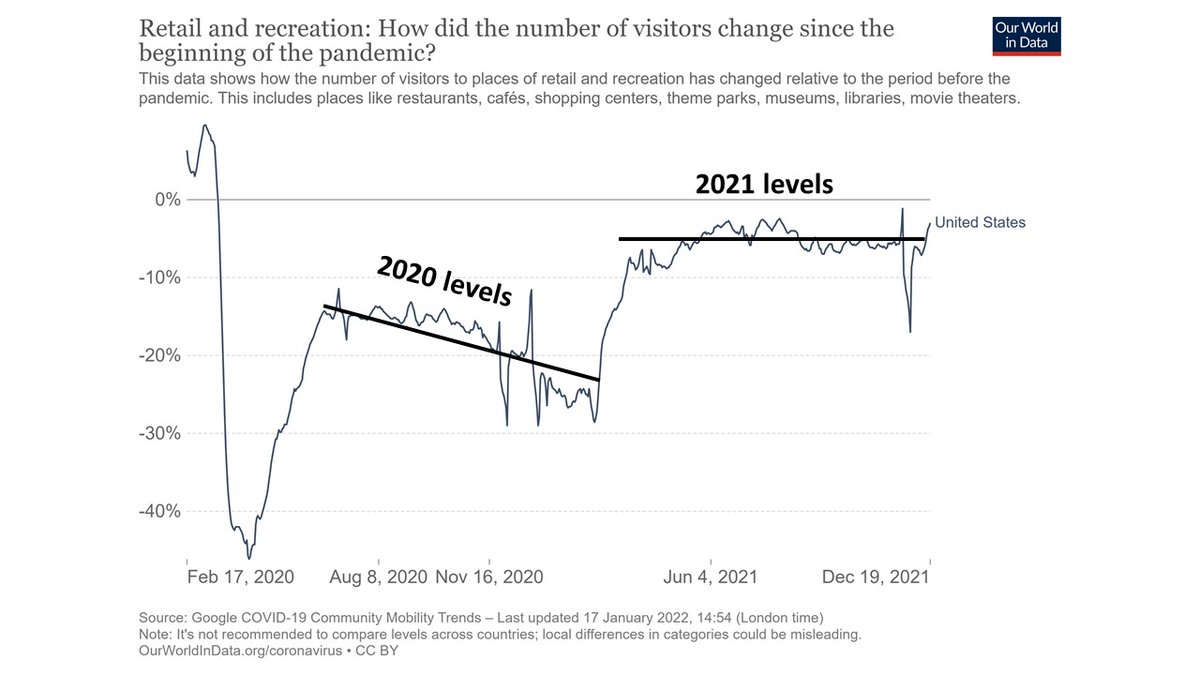If there were 5 take-home messages for the public regarding the epidemiology of the pandemic, what would they be? I've taken a stab below, but would welcome others' thoughts. While it's important to get the details right, it's also important not to lose the forest for the trees.
1. We're less than halfway through.
Even in the best-case scenario of an effective and safe vaccine available in a few months, it will take much longer to distribute, deliver, and change public opinion.
Even in the best-case scenario of an effective and safe vaccine available in a few months, it will take much longer to distribute, deliver, and change public opinion.
2. We can't just go back to normal.
Even if herd immunity is starting to have an effect, this effect is being maintained by behavior change - no large gatherings, wearing masks, social distancing, etc. If contact patterns return to pre-pandemic levels, it will be deadly.
Even if herd immunity is starting to have an effect, this effect is being maintained by behavior change - no large gatherings, wearing masks, social distancing, etc. If contact patterns return to pre-pandemic levels, it will be deadly.
3. Each of us can still make a big difference.
Nearly everyone on the planet still has loved ones who are at increased risk of COVID death. Every day that each of us minimizes our own risk of infection and transmission - and therefore protects the ones we love - is a success.
Nearly everyone on the planet still has loved ones who are at increased risk of COVID death. Every day that each of us minimizes our own risk of infection and transmission - and therefore protects the ones we love - is a success.
4. The pandemic isn't fair.
The people suffering the most from this disease are the ones working the hardest to keep the rest of us safe and those who are struggling (financially, societally, caring for kids/parents, etc). Those of us who are more fortunate must remember this.
The people suffering the most from this disease are the ones working the hardest to keep the rest of us safe and those who are struggling (financially, societally, caring for kids/parents, etc). Those of us who are more fortunate must remember this.
5. We will win this war.
Our immune systems are designed to fight viruses like this. After >6 months, reinfection is very rare and usually mild. Population immunity will occur. In 5 years, COVID will not be a top-10 cause of death. It may take time, but we will beat this virus.
Our immune systems are designed to fight viruses like this. After >6 months, reinfection is very rare and usually mild. Population immunity will occur. In 5 years, COVID will not be a top-10 cause of death. It may take time, but we will beat this virus.
Meaning, in summary:
"We have a long way to go (1), but we need to keep our guard up (2) to protect our loved ones (3) and support those who are less fortunate (4) - knowing that, if we keep it up, we will ultimately succeed (5)."
"We have a long way to go (1), but we need to keep our guard up (2) to protect our loved ones (3) and support those who are less fortunate (4) - knowing that, if we keep it up, we will ultimately succeed (5)."
• • •
Missing some Tweet in this thread? You can try to
force a refresh















